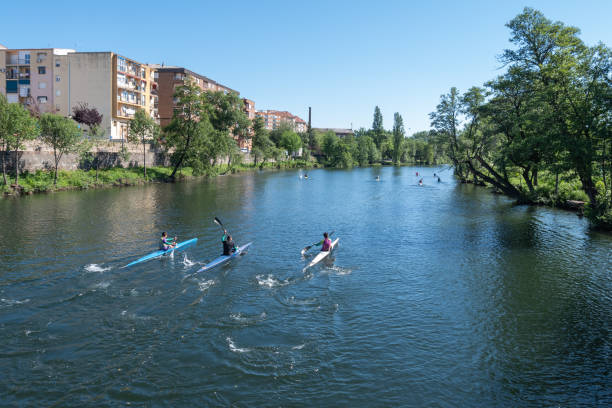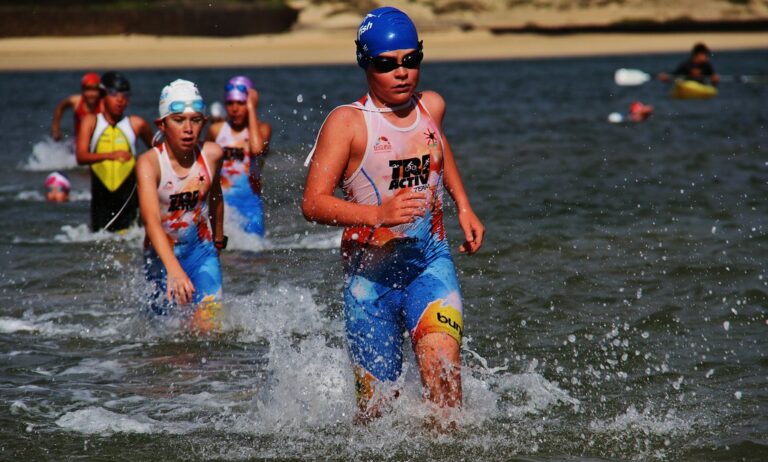General Rules of Surf Lifesaving
Imagine the vast expanse of the ocean stretching out before you, the waves crashing against the shore. As a surf lifesaver, understanding the general rules is crucial for keeping both yourself and others safe. From swimming between the flags to signaling for help, each guideline plays a vital role in ensuring a successful rescue operation. But there's one key aspect that cannot be overlooked, a factor that can mean the difference between life and death. Curious to know what it is?
Importance of Surf Lifesaving
Understanding the importance of surf lifesaving is crucial for ensuring the safety of beachgoers and preventing water-related accidents. Water safety is a fundamental aspect of beach activities, and being knowledgeable about lifesaving techniques can make a significant difference in emergency situations. Lifesaving goes beyond just rescuing swimmers in distress; it involves a comprehensive understanding of the ocean, weather conditions, and potential risks that can arise while in the water.
When it comes to water safety, being prepared is key. Lifesaving techniques encompass a range of skills, from basic first aid to advanced rescue methods. Knowing how to assess the water conditions, identify potential hazards, and respond effectively in emergencies can be life-saving. By familiarizing yourself with proper lifesaving procedures, you not only protect yourself but also contribute to a safer beach environment for everyone.
Whether you are a seasoned beach enthusiast or a novice swimmer, understanding the importance of surf lifesaving is non-negotiable. Water safety is a shared responsibility, and by equipping yourself with the necessary knowledge and skills, you empower yourself to enjoy the ocean responsibly. Stay informed, stay prepared, and be an advocate for surf lifesaving practices to ensure the well-being of all beach visitors.
Swim Between the Flags
To ensure your safety at the beach, it is imperative to always swim between the designated flags. When you swim between the flags, you are in the safest zone monitored by lifeguards. This simple action significantly reduces the risk of encountering dangerous currents or getting too far from shore. By staying within the flagged area, you provide lifeguards with a clear reference point to keep an eye on you and respond quickly in case of any emergency.
Importance of Swimming Between the Flags
To emphasize the significance of swimming between the flags, let's explore the key reasons why this practice is crucial for beach safety and water awareness:
| Benefits | Description | Importance |
|---|---|---|
| Monitored Area | Lifeguards can easily see you and provide assistance if needed. | Ensures quick response |
| Avoids Hazardous Currents | Staying within the flags reduces the risk of being caught in dangerous currents. | Minimizes drowning incidents |
| Visible Reference Point | Gives lifeguards a clear reference to locate you in case of an emergency. | Enhances overall beach safety |
| Safe Distance from Shore | Prevents swimmers from venturing too far from the shore. | Increases water awareness |
Swimming between the flags not only enhances your safety but also contributes to a more secure beach environment for everyone. Make it a habit to always swim within the designated flags for a worry-free beach experience.
Know Your Beach Conditions
Ensure you familiarize yourself with the current beach conditions before entering the water for a safe and enjoyable experience. Beach safety and ocean awareness are crucial for a successful day at the beach. Here are some key points to consider:
- Check the Weather: Before heading to the beach, make sure to check the weather forecast. Sudden changes in weather can impact the ocean conditions.
- Look for Warning Signs: Pay attention to any warning signs or flags posted along the beach. These indicate potential hazards such as strong currents or marine life presence.
- Observe the Waves: Take a few minutes to watch the waves before entering the water. Understanding the wave patterns can help you navigate safely.
- Tide Times: Be aware of the tide times. Knowing when the tide is coming in or going out can prevent being caught off guard by rising water levels.
- Ask the Lifeguards: If there are lifeguards on duty, don't hesitate to ask them about the current beach conditions. They are trained to provide valuable information to keep beachgoers safe.
Respect Rip Currents
When encountering rip currents at the beach, always prioritize your safety by understanding how to navigate them effectively. Rip currents are powerful, narrow channels of fast-moving water that can pull even the strongest swimmers away from the shore. It is crucial to respect the dangers they present and take necessary safety precautions to avoid potential hazards.
Understanding Dangers and Safety Precautions:
| Dangers | Safety Precautions | Action Steps |
|---|---|---|
| Pull swimmers away from shore | Stay calm and avoid fighting the current | Swim parallel to the shore to escape |
| Can exhaust swimmers quickly | Float or tread water if unable to swim | Signal for help if needed |
| Create hazardous swimming conditions | Signal for help if in distress | Await assistance calmly |
Signal for Help
Signal for help by promptly raising your arm and waving it to alert nearby lifeguards or beach personnel in case of distress. In situations where you find yourself in need of assistance while in the water, this simple gesture can make a significant difference in getting help quickly. To enhance your understanding of signaling for help, consider the following:
- Practice Drills: Engage in regular practice drills to familiarize yourself with the proper techniques for signaling distress. These drills can help you react instinctively in real-life emergency situations.
- Effective Communication: Ensure that your signals are clear and visible to those around you. Effective communication strategies can help convey the severity of the situation accurately.
- Stay Calm: While signaling for help, try to remain as calm as possible. Panicking can hinder your ability to communicate effectively with lifeguards or beach personnel.
- Use Whistles: In addition to raising your arm, carrying a whistle can be a valuable tool for signaling for help. The sound of a whistle can attract attention and aid in the rescue process.
- Seek Assistance: Once you have signaled for help, wait for assistance to arrive. Avoid putting yourself at further risk by attempting to resolve the situation alone.
First Aid Basics
When it comes to surf lifesaving, understanding first aid basics is crucial for effectively responding to emergencies. You should be familiar with CPR techniques to provide assistance in case of cardiac arrest. Additionally, knowing how to treat jellyfish stings is essential for ensuring the safety of those in need of aid.
CPR Techniques
To effectively perform CPR, ensure you follow the proper chest compression and rescue breath techniques as outlined in the lifesaving guidelines. Here are some key points to keep in mind:
- Maintain Proper Hand Placement: Position your hands correctly on the center of the chest.
- Apply Adequate Pressure: Press down at least 2 inches deep for adult victims.
- Perform Chest Compressions at the Right Rate: Aim for 100 to 120 compressions per minute.
- Deliver Rescue Breaths Effectively: Ensure the airway is open and deliver breaths that make the chest rise.
- Consider Hands-Only CPR: In drowning scenarios, hands-only CPR can be as effective as CPR with breaths, especially if you are not trained in rescue breaths.
Treating Jellyfish Stings
Upon encountering a jellyfish sting, promptly assess the affected area for immediate treatment. If stung, first rinse the affected area with vinegar to deactivate any remaining jellyfish stingers. Vinegar application can help prevent further venom release. Next, carefully remove any tentacles with a gloved hand or tweezers. To alleviate pain, consider soaking the area in hot water (not scalding) for 20-45 minutes; this can also help inactivate toxins. If vinegar is unavailable, a hot water alternative can be used. After initial treatment, monitor the individual for signs of allergic reactions or severe pain. Seek medical attention if symptoms worsen or persist. Remember, swift and proper care is crucial in managing jellyfish stings effectively.
Use of Rescue Equipment
Understanding and proficiently utilizing rescue equipment is essential for effective lifesaving operations in surf environments. When it comes to rescue equipment, there are some key techniques and drills that you must master to ensure successful outcomes. Here are some important points to keep in mind:
- Rescue Tube Techniques: The rescue tube is a vital tool in surf lifesaving. Practice proper techniques for deploying, swimming with, and using the rescue tube to support a victim in distress effectively.
- Board Paddle Drills: Board paddles are crucial for reaching victims quickly. Work on your paddling skills to navigate through the waves efficiently and ensure swift rescue operations.
- Equipment Maintenance: Regularly inspect all rescue equipment to ensure it is in good working condition. Any damaged or faulty gear must be replaced immediately to maintain readiness.
- Proper Storage: Store rescue equipment in designated areas that are easily accessible in case of emergencies. Proper storage helps in quick deployment when time is of the essence.
- Training and Familiarization: Continuously train with the rescue equipment to stay familiar with its usage. Regular practice sessions enhance your proficiency and response times during rescue missions.
Teamwork and Communication
For effective surf lifesaving operations, cohesive teamwork and clear communication are paramount. Effective communication is the cornerstone of smooth operations in any surf lifesaving team. It ensures that everyone is on the same page, understands their roles, and can quickly adapt to changing situations. Team building is crucial for fostering a supportive and collaborative environment within the group. By developing trust and camaraderie among team members, the overall effectiveness of the team is greatly enhanced.
To achieve effective communication, it is essential to establish clear protocols and channels for sharing information. Team members should be encouraged to communicate openly, actively listen to one another, and provide feedback constructively. Utilizing radios or hand signals can also help streamline communication during rescues or other critical moments. Regular training sessions focused on communication skills can further strengthen the team's ability to work cohesively.
Team building activities such as group exercises, team challenges, or even social gatherings outside of training sessions can help foster a sense of unity and solidarity among team members. When individuals feel connected and supported by their teammates, they are more likely to communicate effectively and work together seamlessly during emergencies.
Frequently Asked Questions
How Can Surf Lifesavers Effectively Communicate With Non-English Speaking Beachgoers?
So, you're out there trying to connect with non-English speakers at the beach, huh? Well, break those language barriers with cultural sensitivity. Use effective communication strategies and offer language assistance to ensure understanding.
What Are the Qualifications Required to Become a Surf Lifesaver?
To become a surf lifesaver, you need to complete specific training requirements. These include mastering lifesaving techniques such as rescues, first aid, and CPR. Training equips you with vital skills to save lives effectively.
Are There Any Specific Rules or Guidelines for Surf Lifesavers When Dealing With Marine Wildlife?
When dealing with marine wildlife, remember safety precautions are vital. Maintain beach wildlife awareness and learn rescue techniques. Always approach interactions cautiously. Stay informed on local guidelines for handling marine animals to protect both them and yourself.
How Often Should Surf Lifesavers Undergo Refresher Training and Certification Updates?
You should aim for regular refresher training and certification updates to stay sharp in your skills. By scheduling these sessions consistently, you can ensure that you are always prepared for any situation that may arise.
What Are the Protocols for Surf Lifesavers When Dealing With Beachgoers Who Are Under the Influence of Drugs or Alcohol?
When dealing with beachgoers under the influence of drugs or alcohol, as a surf lifesaver, it's crucial to utilize de-escalation techniques to diffuse situations. Intervention strategies should aim to prioritize safety for all involved.






